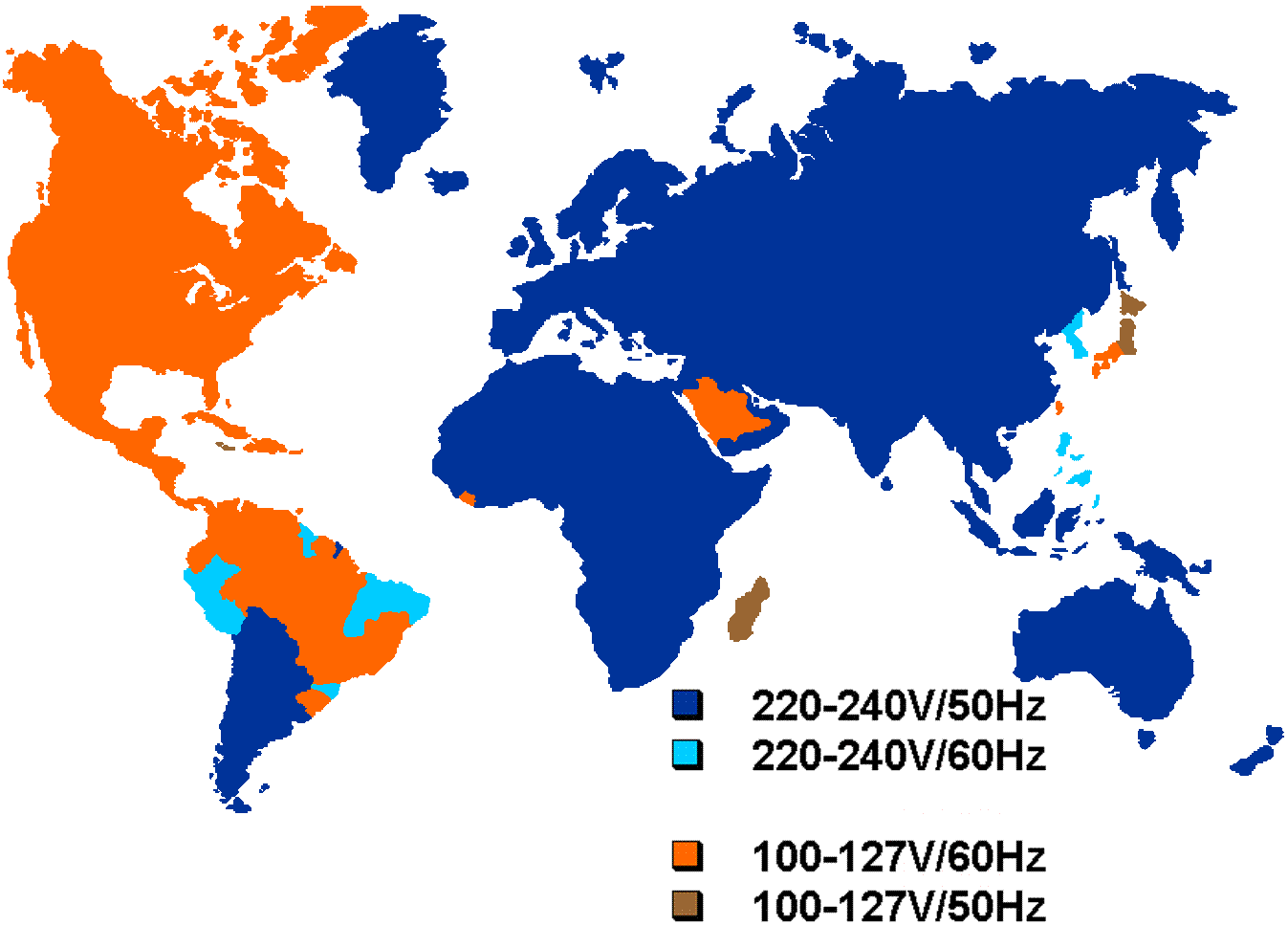What is Voltage, Current and Resistance
Voltage is a quantitative expression of the potential difference in charge between two points in an electrical field. The greater the voltage, the greater the flow of electrical current.
Electrical Current is the movement of electrical charge and is measured in Amperes, symbol I, for Intensity). It is the continuous and uniform flow of electrons (negative particles of an atom) around a circuit that are being "pushed" by the voltage source.
The Resistance of a circuit is its ability to resist or prevent the flow of current (electron flow) through it making it necessary to apply a bigger voltage to the circuit to cause the current to flow again. Resistance is measured in Ohms, Greek symbol (Ω, Omega).
In simple
Voltage: electrical ”pressure” between two different points or locations.
Current: the flow of electrons.
Resistance: opposition, or ”friction,” to the flow of electrons.
What is (DC)Direct Current
D.C. as it is more commonly called, is a form of current or voltage that flows around an electrical circuit in one direction only, making it a "Uni-directional" supply .A uni-directional or DC supply never becomes negative unless its connections are physically reversed.
What is (AC) Alternating Current
Is defined as one that varies in both magnitude and direction in more or less an even manner with respect to time. Definitions
- The Period, (T) is the length of time in seconds that the waveform takes to repeat itself from start to finish. This can also be called the Periodic Time of the waveform for sine waves, or the Pulse Width for square waves.
- The Frequency, (ƒ) is the number of times the waveform repeats itself within a one second time period. Frequency is the reciprocal of the time period, ( ƒ = 1/T ) with the unit of frequency being the Hertz, (Hz).
- The Amplitude (A) is the magnitude or intensity of the signal waveform measured in volts or amps.
Types of Periodic Waveform
Average Value of a Non-sinusoidal Waveform
To find the average value of the waveform we need to calculate the area underneath the waveform using the mid-ordinate rule, trapezoidal rule or Simpson's rule found in mathematics. The approximate area under any irregular waveform can easily be found by simply using the mid-ordinate rule. The zero axis base line is divided up into any number of equal parts and in our simple example above this value was nine, (V1 to V9). The more ordinate lines that are drawn the more accurate will be the final average or mean value. The average value will be the addition of all the instantaneous values added together and then divided by the total number. This is given as.
Where: n equals the actual number of mid-ordinates used.
For a pure sinusoidal waveform this average or mean value will always be equal to 0.637 x Vmax and this relationship also holds true for average values of current.
The RMS Value of an AC Waveform
The average value of an AC waveform is NOT the same value as that for a DC waveforms average value. This is because the AC waveform is constantly changing with time and the heating effect given by the formula ( P = I 2.R ), will also be changing producing a positive power consumption. The equivalent average value for an alternating current system that provides the same power to the load as a DC equivalent circuit is called the "effective value". This effective power in an alternating current system is therefore equal to: ( I 2.R.Average ). As power is proportional to current squared, the effective current, I will be equal to √ I 2 Ave. Therefore, the effective current in an AC system is called the Root Mean Squared or R.M.S. value and RMS values are the DC equivalent values that provide the same power to the load.
The effective or RMS value of an alternating current is measured in terms of the direct current value that produces the same heating effect in the same value resistance. The RMS value for any AC waveform can be found from the following modified average value formula.
Where: n equals the number of mid-ordinates.
For a pure sinusoidal waveform this effective or R.M.S. value will always be equal to 1/√2 x Vmax which is equal to 0.707 x Vmax and this relationship holds true for RMS values of current. The RMS value for a sinusoidal waveform is always greater than the average value except for a rectangular waveform. In this case the heating effect remains constant so the average and the RMS values will be the same.
One final comment about R.M.S. values. Most multimeters, either digital or analogue unless otherwise stated only measure the R.M.S. values of voltage and current and not the average. Therefore when using a multimeter on a direct current system the reading will be equal to I = V/R and for an alternating current system the reading will be equal to Irms = Vrms/R. Also, except for average power calculations, only use VRMS to find IRMS values, or peak voltage, Vp to find peak current, Ip values. Do not mix the two together average, R.M.S. or peak values as the results will be incorrect.
Voltage across the World





No comments:
Post a Comment